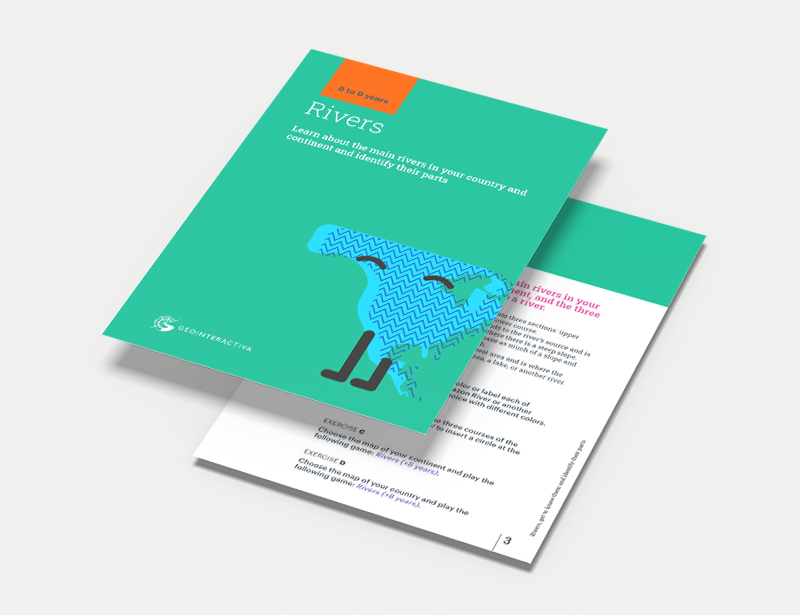
primary (8-9 years old).
The rivers
In this activity, you will discover the importance of knowing the main rivers of your own country and continent, to better understand the geographical environment and help develop a sense of spatial location. In this article, we will explain the importance of teaching children about these natural watercourses and how to do it effectively.
In this downloadable resource, you will find a PDF with instructions to liven up your classes. On one hand, we’ll show you which platform tool you’ll be working with, and on the other hand, we’ll suggest activities suitable for 8-9 years old students.
Do you want your classes to be stimulating? Start today with Geointeractiva.
we suggest teaching geography in a fun way
What will your students learn from this educational activity?
Geography is a fundamental subject in the education of children, as it helps them understand the world around them and develop their sense of spatial location. One of the most important aspects that should be taught in this area is the knowledge of the main rivers in their own country and continent. In this article, we will explore the importance of this topic for primary school children and how it can be taught in a didactic and effective way.
The importance of knowing the main rivers in their country and continent
The knowledge of rivers is important because it allows students to understand the relationship between water and land. Rivers are one of the most important sources of freshwater, and their influence extends beyond their banks. Rivers can influence the flora and fauna of a region, the climate, the economy, and the lives of people living in their surroundings.
In addition, knowledge of the main rivers in a country or continent is important to understand the culture and history of a region. Rivers have often been the source of life for ancient civilizations, and many human settlements have developed around them. By understanding the location and importance of rivers, students can better understand the history and culture of their own region.
Teaching about rivers in a didactic way
To teach students about the main rivers in their country and continent, it is important to do so in a didactic and effective way. Here are some suggestions:
Use maps and visual resources. Maps are an important tool for teaching about rivers. Students can see the location of rivers, their tributaries, and how they connect with other bodies of water. It is also helpful to show photos and videos of rivers and their surroundings so that students can visualize and better understand their importance.
Learn through experience. Students can learn about rivers through classroom and outdoor activities. Trips can be made to nearby rivers to see how they work and how they affect life in the area. Students can also participate in projects to measure water quality and learn how humans can affect rivers.
Encourage creativity. To get students more involved in the topic, it is important to encourage their creativity. For example, students can be asked to create a model of a river out of clay or papier-mâché, or to make drawings and paintings of their favorite river.
Teach through history. Rivers are an important part of the history and culture of many regions. When teaching about rivers, historical and cultural themes can be included. For example, the importance of the Nile River in Egyptian culture or the connection between the Mississippi River and the history of the United States can be taught.
Conclusions
The knowledge of the main rivers in a country or continent is essential for primary school children to understand the physical and human geography of their surroundings and, in turn, develop important cognitive and social skills. Through the teaching of geography, children can learn to identify and compare different rivers, analyzing their flow, length, economic, cultural and environmental importance. In addition, they can understand how rivers have influenced historical development, daily life, and social relationships in different regions of the world. In this way, a solid foundation of knowledge and values can be provided to enable them to make informed and responsible decisions in the future related to environmental protection and the promotion of sustainable development. Ultimately, educating primary school children in river geography can be a fundamental aspect of their integral formation as citizens of the world.